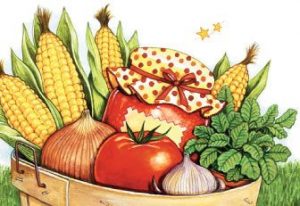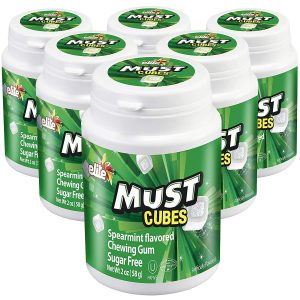 Vegetarians don’t eat fish or meat, fish, poultry. Vegans don’t eat anything that comes from animals – including eggs, milk, and honey.
Vegetarians don’t eat fish or meat, fish, poultry. Vegans don’t eat anything that comes from animals – including eggs, milk, and honey.
Eating Meat Permitted by Torah
The Torah permits eating meat. Obviously it must be a kosher animal and slaughtered kosher – in a manner that does not cause pain to the animal. Crustaceans and shellfish are not-kosher – so anything that is kosher will not contain them.
Eating Honey
According to Torah one cannot eat anything that comes from a non-kosher animal. Honey – however can be eaten even though it comes from bees – a non-kosher creature. Because bees only process the honey with their enzymes – they don’t produce it using ingredients from their bodies.
“Enzymes are protein molecules in cells which work as catalysts. Enzymes speed up chemical reactions in the body, but do not get used up in the process. Almost all biochemical reactions in living things need enzymes. With an enzyme, chemical reactions go much faster than they would without the enzyme.” – Definition
Thus the bee is not changing the nectar into honey – apparently it is just speeding up the process. It’s enzymes do not become part of the honey. Using this reasoning it should be kosher. Thus technically speaking, a vegan should be able to eat honey. But I am not trying to get vegans to eat honey. Just pointing out an interesting point.
Understanding Kosher Symbols
In any case to understand how kosher symbols can help we must understand the different statuses of food.
Kosher – anything allowed to be eaten by Jewish law.
Non-kosher – made with a non-kosher animal or its by-products. Milk and meat mixed together. Wine or grape juice that was not processed according to Jewish law. (thus to drink it one assures the wine or grape juice has a Kosher symbol).
Dairy – has milk inside. In Yiddish – Milchig.
Parve – has no milk or meat – could have eggs, honey or fish derivatives.
Meat – has meat inside. In Yiddish – Fleichig.
Kosher for Passover – contains no leavened wheat products or leavening – like yeast. Thus beer may be Kosher, but it not Kosher for Passover.
Nowadays there are many Kosher certification symbols – like the OU (thee Orthodox Union), OK, Star-K, Badatz Jerusalem, etc. One checks the food product to determine if it has a Kosher symbol on it.
A Vegetarian will eat anything that is dairy or parve (provided it has no fish by-products in the ingredients).
A Vegan will eat some-things that are parve (provided it has no eggs, honey or fish by-products). So a vegan who buys parve things will just have to check the ingredients for eggs, honey or fish by-products and will be able to consume them.
The Kosher symbols allow people to know what is in food. Let’s take the OU.
OU has various designations:
OU P – Kosher & Kosher for Passover
OU D – Kosher – Dairy
OU Parve – Kosher Parve
OU DE – although the OU no longer uses this designation – it means Dairy Equipment – the food was produced on equipment that also make dairy food.
Now the OU uses OU D for even things made on dairy equipment. So it is possible that food with this symbol may not contain dairy – but it was made on dairy equipment. Thus depending upon how strict a Vegan is, one might be able to eat OU D – if they check the ingredients and there is no dairy ingredients.
Lactose-intolerant people can also be helped with Kosher symbols – by seeing if a food product is parve. (But it is prudent to check the ingredients in any case)
 I remember the old cell phones. They were about the size of a brick. My first was a small Qualcomm device. Then I got a flip, then a Smart phone. I reverted back to a flip – because – through my filter – I saw I was spending too much time on certain apps. So I got a flip.
I remember the old cell phones. They were about the size of a brick. My first was a small Qualcomm device. Then I got a flip, then a Smart phone. I reverted back to a flip – because – through my filter – I saw I was spending too much time on certain apps. So I got a flip.
 It seems that many people have a feeling for Judaism – Jews & Gentiles.
It seems that many people have a feeling for Judaism – Jews & Gentiles.